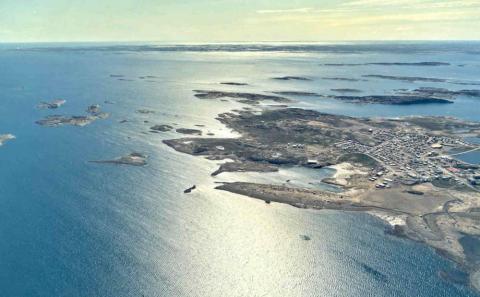For about a decade, stories have been trickling down to the lower latitudes of indigenous Arctic peoples being forced to abandon whole villages because the sea rising up and washing them away. Stories of Inuit hunters falling through the thinning ice. Stories of once vital herds of caribou, a staple for many indigenous hunters, in rapid decline.

Currently, 4 million people of diverse ethnicities and languages are living in Arctic regions and adjusting to the new nature of their environment. The Arctic is, on average, warming at twice the speed of the rest of the world. Not only is the Arctic climate changing faster, but many of the people living there are intimately connected with the land, making adapting to the new conditions a much more involved process.
In a recent study about the values of indigenous peoples in Labrador, Canada, one man spoke of his inability to hunt food in the traditional way, ‘‘‘Never got up seal hunting on the bay so that was a big change, I usually goes seal hunting every spring. It’s more like a tradition thing [. . .] I like seal meat [. . .] especially in the springtime, [. . .] you take your tent and stove and you go up on the bay, camp for a couple nights and you kill a seal, take it in, fry it or boil it up.’’
It might seem strange to those of us living in warmer climes, surrounded by heaters and grocery stores, that someone would treasure an arduous hunting expedition in the middle of an Arctic spring. It is, perhaps, impossible for us to understand the true meaning of the traditions and the Arctic landscape to the indigenous peoples who live there. But, from this story, we can understand how human lives are being changed in a dramatic way by climate change.
Adapting to a changing Arctic
The story of the climate refugee is not a new one. Climate refugees are often used as the face of climate change; they add a human thread to the vast and overwhelming tapestry of nature. They bring these incomprehensible changes down to scale and can even prompt us to take action at a local level, with results that can be felt and appreciated.
Over the last 20 years policymakers have emphasized adaptation as a way to manage the effects of climate change at a local level. Adaptation in this context means the ability to effectively respond to the negative aspects of climate change and to take advantage of the opportunities it might create.
Adaptation can come in many forms, from infrastructure updates, to changing hunting patterns, to relocating whole villages. Factors like location, available technology, socioeconomic conditions, and knowledge about climate change and its current and projected impacts affect the ability of indigenous peoples to adapt. Some communities are better situated than others to react to the changing Arctic climate.
Perhaps the most heart tugging aspect of all is how capable many of these communities are at adapting. They’ve been doing it for generations.
“I think people in Nunatsiavut, we have kind of like a reputation for being a people that can adjust to whatever happens. Like, whatever happens, we just learn to deal with it. We kind of just move on to whatever’s, you know. Like, we’re not gonna … I guess the saying is ‘cry over spilled milk’. Like, you know, if things get a little bit tougher or stuff like that, then we learn to deal with it,” said one young man in a study focusing on the effects of climate change on mental health in youth.
Where do we go from here?
While adapting to a warming Arctic seems like the most obvious and manageable way for indigenous communities to continue living in the Arctic, it’s hard not to notice the unfairness of the situation. The people who contribute the least to climate change are being asked to change themselves the most.
Meanwhile, the rest of the world drags its feet and resists measures to cut back carbon emissions. In the US, the Clean Power Plan, Obama’s strategy for cutting carbon emissions 32% by 2030, is entangled in a Supreme Court case that will, at the very least, stall its enactment by two crucial years.
While it isn’t possible to make up for past injustices, there is a chance for the United States to do great good by cutting greenhouse gas emissions. You can be a part of making this happen by supporting the Clean Power Plan and ensuring states are cutting CO2 emissions and investing in renewable energy.
